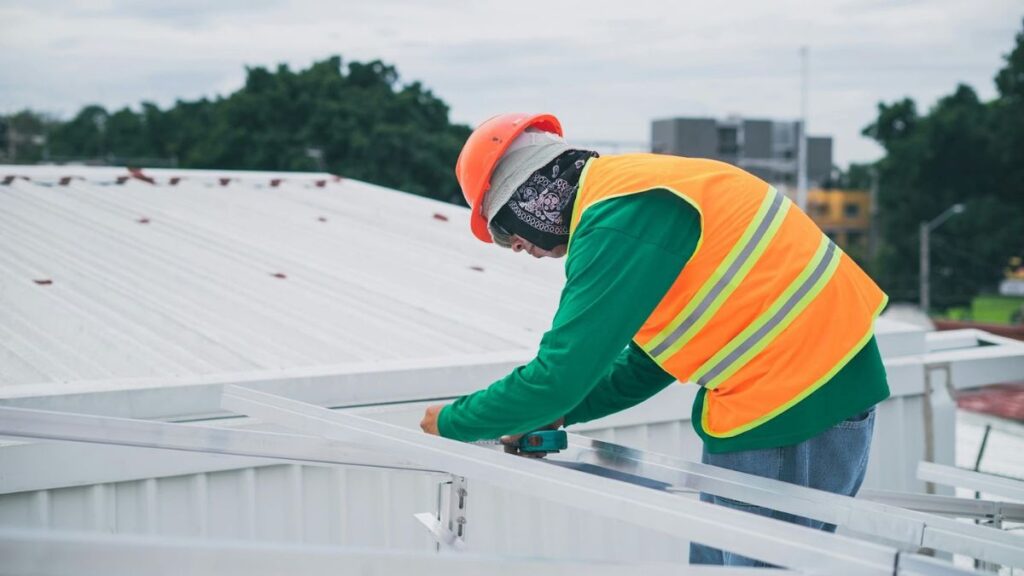Metal roofing is renowned for its durability and longevity, making it a popular choice for homeowners and business owners alike. However, like any roofing material, it still requires proper maintenance to ensure its lifespan and performance. Whether you’re considering installing a metal roof or already have one, understanding the roofing Maintenance steps can help you avoid costly repairs down the road. From regular inspections to managing potential corrosion, staying on top of routine care will keep your roof in top shape for years to come.
In this post, we’ll explore six crucial things you need to know about metal roofing maintenance, so you can protect your investment and enjoy peace of mind, no matter the weather conditions. Let’s dive in.
Regular Inspections
One of the most important aspects of maintaining a metal roof is conducting regular inspections. Over time, even the toughest roofing materials can experience wear and tear due to weather conditions like rain, snow, or high winds. By performing inspections at least twice a year, you can identify small issues before they turn into larger, more expensive problems.
Look for signs of damage such as loose panels, rust spots, or debris buildup in valleys or gutters. Catching these issues early can help you maintain the integrity of your roof and ensure that it continues to protect your home or business effectively.
Seeking Professional Guidance for Complex Maintenance
While basic maintenance tasks can often be handled on your own, there are times when professional assistance is needed. Seeking expert advice for more complex issues—such as significant rust damage, structural concerns, or faulty installation—is crucial for ensuring your metal roof’s optimal performance.
Professional roofing contractors can assess your roof more thoroughly and make informed recommendations for repairs or upgrades. For instance, you can find tips for metal roof care to enable you to better understand when it’s time to do maintenance or call in the pros for more intensive maintenance. This ensures that your roof will be maintained to the highest standard.
Cleaning and Removing Debris
Debris such as leaves, twigs, and dirt can accumulate on your metal roof, obstructing water flow and leading to potential damage. It is essential to regularly clean your roof to prevent these materials from causing rust or clogging your gutters. A clean roof not only looks great but also enhances the roof’s ability to shed water and resist corrosion.
Depending on the surrounding environment, you may need to clean your roof more frequently. Be sure to use a soft broom or blower to remove debris, and avoid harsh cleaning agents that could damage the metal surface.
Addressing Rust and Corrosion
Metal roofs, though durable, are not immune to rust or corrosion. If left unchecked, rust can spread and compromise the structural integrity of your roof. Regularly inspecting for early signs of rust is critical to extend the life of your roof. If rust is spotted, use a wire brush to remove it and apply a rust-inhibiting primer followed by touch-up paint.
Pay extra attention to areas where moisture can accumulate, such as valleys and roof seams. Proactive care will help you avoid expensive repairs down the road and ensure your roof stays resistant to the elements.
Checking Seals and Flashing
The seals around vents, chimneys, and skylights are vital for preventing water from seeping underneath your metal roof. Over time, these seals can break down due to exposure to the sun and extreme temperatures. Regularly inspect the flashing, seals, and caulking to ensure they remain intact and effective.
If any signs of deterioration or cracking are found, it’s important to reseal these areas promptly to avoid leaks. A well-maintained flashing system will help your metal roof maintain its waterproof qualities and prevent the potential for costly water damage inside your property.
Proper Ventilation: Essential for Roof Health
Good ventilation is a critical but often overlooked aspect of metal roofing maintenance. Without adequate airflow, moisture can accumulate beneath the roof surface, leading to rust, mold, and damage to the roof deck. Ensure that your attic space is well-ventilated, allowing air to circulate and prevent heat buildup that can degrade your roofing materials.
Installing ridge vents or soffit vents can improve ventilation and help regulate temperatures within your attic. Proper ventilation will not only prolong the life of your metal roof but also contribute to energy efficiency by reducing the likelihood of overheating in your home.
Maintaining a metal roof is essential to ensuring its longevity and performance. By conducting regular inspections, cleaning debris, addressing rust, checking seals, and seeking professional guidance when necessary, you can protect your investment and avoid costly repairs. Proper ventilation also plays a key role in preserving your roof’s integrity. With proactive care, your metal roof will continue to provide reliable protection against the elements for many years. Taking the time to maintain it will pay off in the form of durability, energy efficiency, and peace of mind, ensuring your home or business stays safe and secure.







